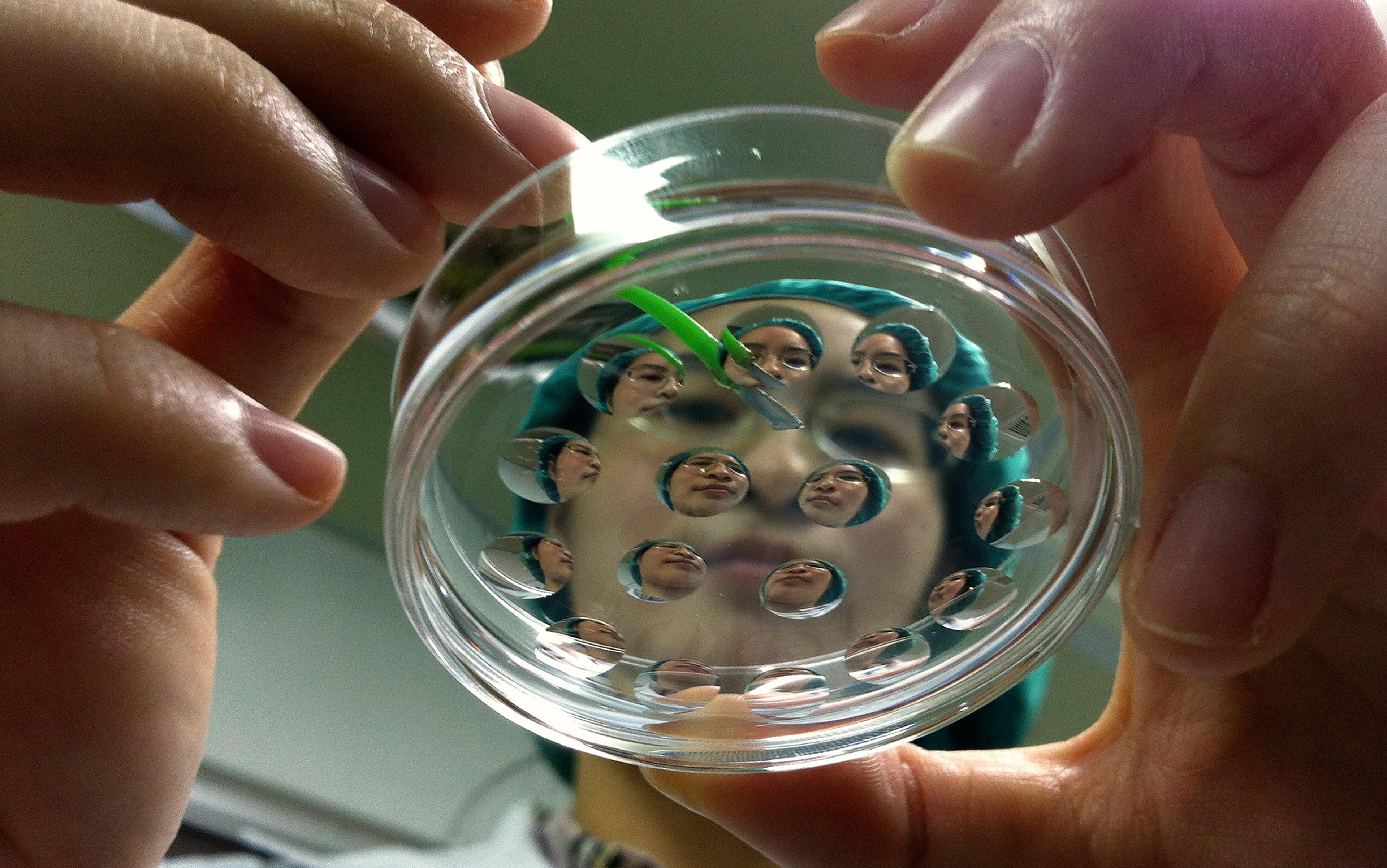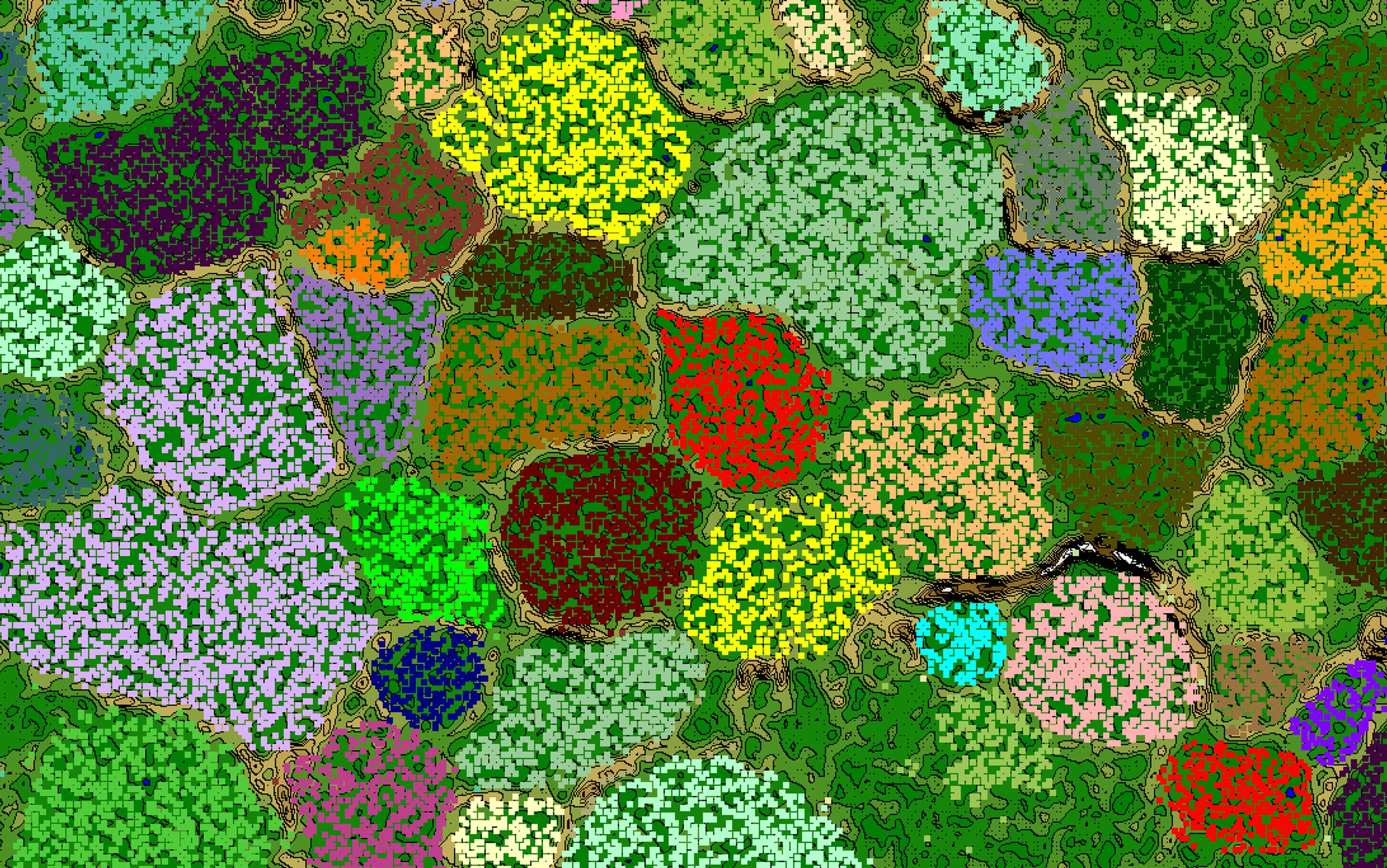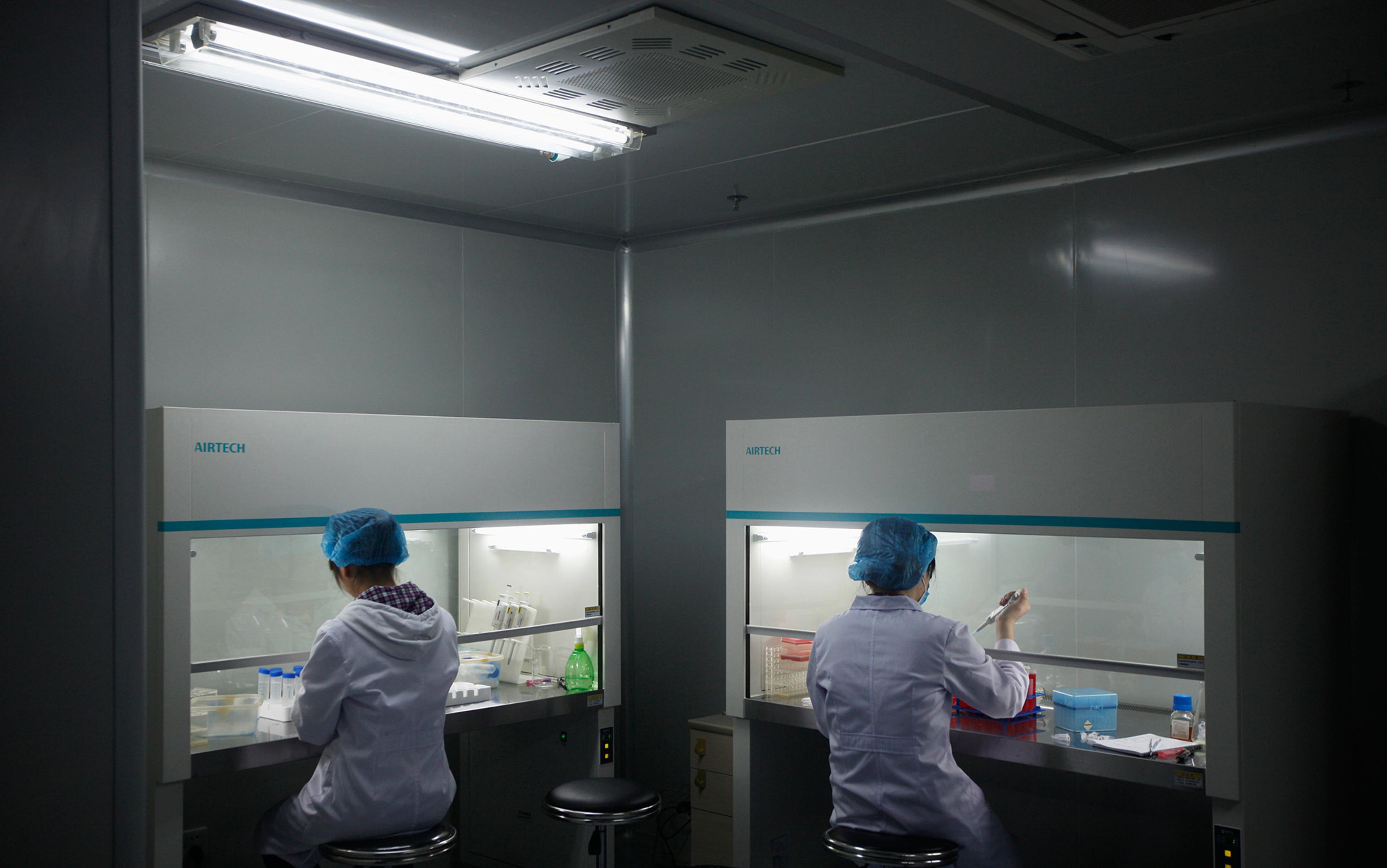Everywhere we turn it seems that biomedical science and biotechnology are making Promethean claims to explain, manipulate and transform our lives. Evolutionary theory offers to explain human origins. Genomics aims to define the similarities and differences between us. Genetic and stem-cell therapies promise to cure or prevent disease, and enhance bodies and brains. And the neurosciences try to predict behaviour, explain consciousness and revive the idea of essential differences between the sexes.
In the past few decades, the life sciences have been transformed into gigantic bio-technosciences, blurring the boundaries between science and technology, universities, entrepreneurial biotech companies, and Big Pharma. Knowledge has become intellectual property, taking its place within a globalised economy that stretches from the older scientific centres of Europe and America to the rising eastern giants of China, Singapore and India. The state, with its interests in surveillance and control, and the military, have also played a key role in this transformation. In its train have come new and formidable powers not only to reconstruct but to construct life. Ours is a techno-scientific world where life is both born and made. This is new territory, with new threats and promises.
Science — knowledge about the physical and biological world — might once have been seen as independent of the society and culture within which it was generated. But as early as the middle of the 19th century, Karl Marx and Friedrich Engels pointed out that the knowledge produced by science served the interests and reflected the ideology of the capitalist class. In the 1930s, this analysis of science was taken up with enthusiasm by the Russian physicist Boris Hessen, whose paper ‘The Socio-Economic Roots of Newton’s Principia’ (1931) electrified the audience at the International Congress of the History of Science in London. Hessen argued that this most arcane of mathematical treatises, and the physics it formalised, were not merely the brilliant insights of an individual scientist, but a response to the needs of the rising mercantile capitalism of the 17th century.
The sociology of science gained real impetus only when global opposition to the Vietnam War in the 1960s saw a renewed questioning of the politics of science. Biologists were among those who were morally outraged that their discipline was being recruited into a monstrous war against a poor peasant society. Research on plant hormones had been re-engineered by military scientists to produce chemical defoliants — new weapons directed against Vietnam’s forests, crops, and people. By the end of the decade, the anger of biologists at what they saw as the ‘misuse’ of their science boiled over onto the pages of leading scientific journals and into street demonstrations, teach-ins on campuses, and occupations of labs (spectacularly so in Japan and Italy). Out of the anger came a new radical science movement. For some, it was part of the counterculture, for others, part of the new left. The new movement challenged the supposed neutrality of science, calling for its democratisation and the building of a science for the people.
The movement was essentially fluid, but also shaped by national contexts. In Italy, the physicist Marcello Cini criticised the commodification of science. French scientists were not far behind; during the May events of 1968, the Paris laboratories were empty. The physicist Monique Couture-Cherki and the sociologist of science Liliane Stéhelin raised the issue of sexism, the former criticising the exclusion of women from science, the latter exposing its androcentric ideology.
These campaigns attacked the institutionalised discrimination against women in science and the claims by biased biology that women were, by nature, the inferior sex
In the US, opposition to President Lyndon B Johnson’s 1965 escalation of the Vietnam War resulted in the formation of the California-based Scientists and Engineers for Social and Political Action and, on the east coast, of the radical journal Science for the People. Students campaigned against a host of military contracts with universities, and discovered that what the former president Dwight D Eisenhower had termed the ‘military-industrial complex’ was now a military-industrial-scientific complex. US universities were inextricably locked inside it. Biologists such as Stephen Jay Gould and the geneticist Richard Lewontin became important voices in the struggle.
In Britain, the first stirrings of the radical science movement developed out of opposition to the Vietnam War. By 1967, biologists (including Steven) were speaking at anti-war meetings on campus attacking the US military’s eco-genocidal defoliants and the lethal use of CS gas, also known as ‘tear gas’. A survey carried out by Hilary drew early attention to the probability (later confirmed) that these defoliants were causing both cancers and birth deformities. Later, she studied the British Army’s use of CS gas during the late 1960s to control the insurrection of nationalists in Northern Ireland, drawing attention to the marginal effects of the gas on young able-bodied rioters and the considerable physical distress caused to the elderly and the vulnerable young.
Meanwhile, the global women’s movement was sharpening the consciousness of female scientists, particularly biologists already involved in radical science as writers and activists. These campaigns attacked the institutionalised discrimination against women in science and the damaging cultural claims by bad, biased biology that women were, by nature, the inferior sex. The psychologist Ethel Tobach, molecular biologist Rita Arditti, biochemist Ruth Hubbard, and the physiologist Ruth Bleier all published foundational texts challenging patriarchal science.
Then, at the close of the 1960s, two young and politically active molecular biologists at Harvard opened a new front — this time concerning the environmental and human risks posed by advances in molecular biology. Jon Beckwith and Jim Shapiro were senior authors of a paper in Nature that reported in 1969 on the first-ever isolation of a gene (the bacterial lac operon). Instead of proudly hailing their scientific and technical triumph, Beckwith and Shapiro used the occasion to call attention to the hazards of such research, in particular, the possibility of genetic manipulation by modifying DNA (recombinant DNA) and the risk of escape of transformed bacteria into the environment, with unforeseeable consequences for plants, animals and humans.
Molecular genetics, they claimed, offered modern society unprecedented power to manipulate life. To the Promethean-minded, this could be for human benefit (and profit); to the sceptic, it constituted a dangerous threat. Beckwith and Shapiro’s warning fed into a slowly building wave of public anxiety concerning the risks posed by the new biotechnology. In response, in 1974 the US National Institutes of Health established a Recombinant DNA Advisory Committee, copied in 1976 by the Genetic Manipulation Advisory Group, UK. In the face of this public alarm and hostility, leading molecular biologists grew worried too — though whether they were concerned about the risk to the environment or their subject field was far from clear.
In 1975, the Stanford biochemist Paul Berg (soon to win a Nobel Prize for his DNA research) organised a unique conference of genetic researchers at Asilomar, in California. Delegates proposed a voluntary moratorium on genetic manipulation, and guidelines on containment facilities to prevent possible escape. Yet the conference was also an opportunity to discuss the commercial potential of the research; in 1976, Herbert Boyer, another recombinant DNA Nobel prizewinner present at Asilomar, formed Genentech, the first of the new Californian biotech companies, with the venture capitalist Robert Swanson. The era of geneticist-entrepreneurs had dawned.
In the contemporary fusion of biomedical reductionism and techno-optimism, the historical distinctions between science and technology, pure and applied science, academic, industrial and military research hold weakly, if at all. In the bio-techno-sciences, researchers move seamlessly between them all, as consultants, entrepreneurs, company directors, and shareholders. Many are in business as much as in science. As the wider economy and the production processes of knowledge have transformed, the values of life scientists themselves changed.
Before, scientists were supposed to be ‘disinterested’. They focused on knowledge of natural entities, hoping for recognition and dreaming of Nobel Prizes, but more mundanely, settling for an adequate salary and a secure pension. In this new world, one Nobelist speaks enthusiastically of making ‘shedloads’ of money, and celebrity scientists can get huge advances for popular science writing and presenting their own TV series.
The loss of scientific neutrality has become a much-discussed problem in the leading scientific journals. Commercial secrets cannot be shared. Researchers have been prosecuted for transferring biological samples from one academic laboratory to another. PhD students can work for months on a project only to stall as they run into a patent. Competition has weakened the co‑operative values of the academic research community. Refereeing research papers and grant applications, for example, presents new difficulties. How can neutrality be maintained when the commercial interests of the referee might conflict with those of the scientist being assessed? The journals have fought to maintain standards by insisting that authors declare conflicts of interest, but this is not easy to police.
The neurosciences collude in this newfangled bio-mystique with their claims to explain selfhood, love and consciousness as located in specific brain regions
Besides, the journals have financial interests too. Most are commercially owned. Nature is the property of Macmillan; the giant Anglo-Dutch publisher Reed-Elsevier owns hundreds of the most prestigious academic journals; while Science turns a profit for its owner, the American Association for the Advancement of Science. University libraries, compelled to purchase the journals, sag under the costs. Various rivals, such as the open-access Public Library of Science, have been created: but here the scientists themselves have to pay to be published. As a result, scientists based in poor countries and weak institutions can now read the journals but their chances of publication in them remain low.
The influential sociologist Robert Merton articulated the norms and values of the scientific community in the 1930s, but since the 1970s these have largely been overwhelmed by other influences. As Merton saw it, individual scientists were neither more nor less ethical than anyone else, so the shared norms of the scientific community were crucial. Merton identified four ideal values for science: Communalism, where scientists share their findings co‑operatively in exchange for recognition (Merton initially called this communism but for obvious reasons the term was soon sanitised); Universalism, ensuring that claims are evaluated in impersonal ways, setting aside questions of status, such as nationality, race or religion; Organised Skepticism, demanding that all scientific claims be scrutinised by the scientific community; and lastly Disinterestedness, that is, where scientists are not influenced by personal material gain but obtain their reward in peer recognition.
Today, intellectual property undermines communalism. Universalism has come under siege by what have been variously termed the new social justice and the new identity movements. Disinterestedness, as well, can no longer be guaranteed. Only organised scepticism remains; but with so much of technoscience shrouded by industrial secrecy (such that data cannot be shared and discussed openly), and with Big Pharma suppressing negative data from its drugs trials, this too is constrained.
Globalisation, with its virtual abolition of distance, space and time, has been central to the growth of contemporary biotechnology. Genomics, for example, is impossible without the revolution in informatics, driven forward above all by the US military’s push for global reach. But as Brazil, Singapore, India and China flex their techno-scientific muscles, the era of US-driven globalisation is coming to an end. Over the past five years, China has overtaken the UK and the US to run the biggest and fastest genome sequencing industry in the world. The Beijing Genomics Institute alone employs 4,000 scientists and technicians, and has already accumulated some 57,000 whole-genome sequences.
In the new space between the university and industry, the old disciplines of science and technology mutate and merge. Hybridity proliferates. Industrial laboratories, with all their requirements for secrecy, are increasingly located within the university campus itself, with science parks for the academics’ spin-off companies handily close by. Thanks to information technology, modern molecular biotech can instantly compare and analyse protein and gene sequences, design chemical structures, and search papers and patents from widely dispersed centres of research. The international proliferation of DNA biobanks is underwritten by informatics, and, as these biobanks need larger and larger data sources, they too foster increasingly global knowledge structures. In the age of globalisation, biomedical information — along with life itself — is thoroughly commodified.
Globalisation has also been critical to the success of Big Pharma, whose annual turnover is now $1.2 trillion and whose geographic reach allows it continuously to relocate research activities and clinical trials in accordance with cost. As Estonia, for example, embraced neoliberal economics and thirsted for investment, it advertised its educated and science-friendly population as ideal for drug testing. Meanwhile, the ethical and political sensitivities associated with research on human reproduction have given a new twist to the problems of finding locations for human embryonic stem-cell research. Here, the alternatives are either countries with little or no regulation, or those where there is clear but not too demanding ethical regulation.
Behavioural geneticists have held genes responsible for everything from sexual orientation, female coyness and male violence, to voting intentions and respect for royalty
In its desire to lead the field technically and commercially, the UK chose the path of light regulation. In the US, under the George W Bush administration, it was illegal for federal funds to be used for human embryonic stem-cell research. But individual states and private companies can do what they choose. California not only permitted human embryonic stem-cell research, but allocated more funds than the researchers themselves could usefully employ. Texas has gone further, permitting stem-cell clinics, even though the federal government refuses to licence the procedures. And there is no prohibition on private research into human reproductive cloning. The legal fight that ensued after President Obama overturned Bush’s prohibition has perpetuated this unstable environment.
Emergent technologies, which generally receive less publicity, are also being built around the fusion of info and biotech — electronics and biology. First came biometric markers such as iris recognition, now a familiar airport security device. And the state’s demand for information on its citizens has gone far beyond simply recording their commercial transactions and movements across cities. Today’s incarnation of Jeremy Bentham’s all-seeing Panopticon observes and records our shopping practices, street movements and biometric measures, as well as our biomedical data and, above all, our DNA. The UK’s National DNA Database, which allows the police to store DNA profiles and is the largest such data bank in the world, was curtailed in 2008 by the European Court of Justice. But the UK’s National Health Service electronic medical records (which include DNA information) have been commodified by stealth — tucked into legislation focusing on larger health-care issues.
The neuro-technosciences are not far behind, with promises to be able to read and manipulate mind, memory and intentionality by scanning the brain. Enthusiasts claim that EEG and fMRI scans are a window into the living brain that can identify potential psychopaths, criminals and terrorists before they have committed any criminal act. Neuroskeptics question these claims. Nonetheless, the research is increasingly well-funded — by the US military in particular.
In our postmodern era the life sciences have claimed, and have been given, authority to define ‘human nature’, but biology has a long and deplorable history of defining human bodies and brains in terms of fixed hierarchical differences. Ever since Darwin, biology has sought to explain our sense of identity, and in recent decades, molecular biologists have repeatedly claimed that the human genome would finally unravel that mystery.
The Human Genome Project was subject to a blaze of publicity at its launch in 1990 and again at it completion in 2003. Gene talk filled the media, fanned by the brilliant pen of Richard Dawkins, who, as far back as 1976, said we were all just ‘lumbering robots’ driven by the interests of our genes. The left, anti-racists and feminists fought such biological determinism tooth and nail. Meanwhile several members of the Kennedy clan made high-profile claims about having genes for alcoholism, and the American geneticist Dean Hamer’s published a paper in Science in 1993 suggesting he’d found a genetic marker for homosexuality (immediately, if inaccurately, christened ‘the gay gene’). Genes for everything from criminality to compulsive shopping soon followed. By the end of the first decade of this century, behavioural geneticists have held genes responsible for everything from sexual orientation, female coyness and male violence, to voting intentions, respect for royalty, and the inevitability of a neoliberal economy.
Amplified by a largely uncritical media, such claims have entered popular culture. Everyday gene talk, with its genes for this and genes for that, has powered up, and the metaphor of DNA has gone into orbit. It is to be found in the design of BMW cars, the core values of the British prime minister David Cameron’s Conservatives and, most recently, those of the Russian president Vladimir Putin’s compatriots: ‘We are a victorious people — it’s in our genes, in our genetic code, passed down from generation to generation,’ Putin declared at an election rally in Moscow in 2012. Indeed, it is hard to find a politician or media pundit who fails to invoke the metaphor in almost any conceivable context in which immutable values are claimed.
The neurosciences collude in this newfangled bio-mystique; their claims to explain selfhood, love and consciousness as located in specific brain regions — a sort of internal phrenology — are articulated in a string of popular books. Joseph LeDoux writes of The Synaptic Self (2002), Antonio Damasio of Descartes’ Error (1994). Semir Zeki, professor of neuroesthetics at University College, London, claims that romantic love is the product of neural activity in the brain’s putamen and insula. In The Astonishing Hypothesis(1994), Francis Crick argues that our intentionality and agency as humans is an illusion: in ‘reality’ we are nothing but a bunch of neurons, our consciousness closeted in the claustrum at the centre of the brain, and free will in its anterior cingulate sulcus. The French neuroscientist Jean-Pierre Changeux writes of ‘Neuronal Man’. Given current sensibilities about the directive power of language, that term jars; even so, the autism researcher and Cambridge professor Simon Baron-Cohen, insists in The Essential Difference (2003) on positing both a neuronal woman and a neuronal man, their differences fixed by a hormonal surge to the fetal brain. These new versions of old essentialist claims have been strongly criticised, not just for their methodology but for their underlying assumptions, most recently by a new generation of feminist neuroscientists, such as Cordelia Fine, in Delusions of Gender (2010), and Rebecca Jordan-Young in Brain Storm (2010).
The dominant voices of the commercialised life sciences of the 21st century are unhappy with complexity and the indeterminacy of the human condition, but this leaves them with a paradox. They see human nature as fixed, even as they offer to transform human life through the real and imagined power of the biotechnosciences. In his new book, Life at the Speed of Light (2013), the gene sequencer and biotech supremo J Craig Venter points the way forward. Subtly modifying Dawkins’s aphorism about ‘lumbering robots’, he insists not only that genes — DNA — are determinate, but that ‘this new understanding of life and the recent advance in our ability to manipulate it’ will propel us into an era of ‘biological design’.
‘Humankind,’ Venter writes, ‘is about to enter a new phase of evolution.’ With this claim, Venter is not so far removed from the fringes of American futurism associated with scientific dreamers such as Ray Kurzweil, who hails the imminent arrival of ‘the singularity’, in which the combined powers of the new technosciences will converge at a nodal point, and a transformed post-human biocybernetic species will emerge.
More than half a century ago, the French philosopher Jean-Paul Sartre rejected all essentialist claims: ‘there is no human nature… man is nothing else but that which he makes of himself.’ In The Second Sex (1949), Simone de Beauvoir insisted that ‘one is not born, but rather becomes, a woman’. And in his essay ‘The 18th Brumaire of Louis Napoleon’ (1852), Marx wrote: ‘Men make their own history but they do not make it as they please; they do not make it under self-selected circumstances, but under circumstances existing already.’
This idea needs extending; those ‘circumstances existing already’, by which women’s and men’s actions are constrained, certainly include the human history and social conditions to which Marx refers. But as Darwin argued, they include the history of human biology itself. Both these giants of 19th-century social and biological theory were radical indeterminists. As authors of this essay, we share that indeterminacy; we believe that humans make their own history, but they do so in circumstances that include both their physically embodied social existence and their socially embedded biological existence. Too much time has been wasted by strong social constructionism and biological essentialism talking past one another.
This essay has been adapted from the Roses’ book Genes, Cells and Brains, to be published in paperback in 2014.






